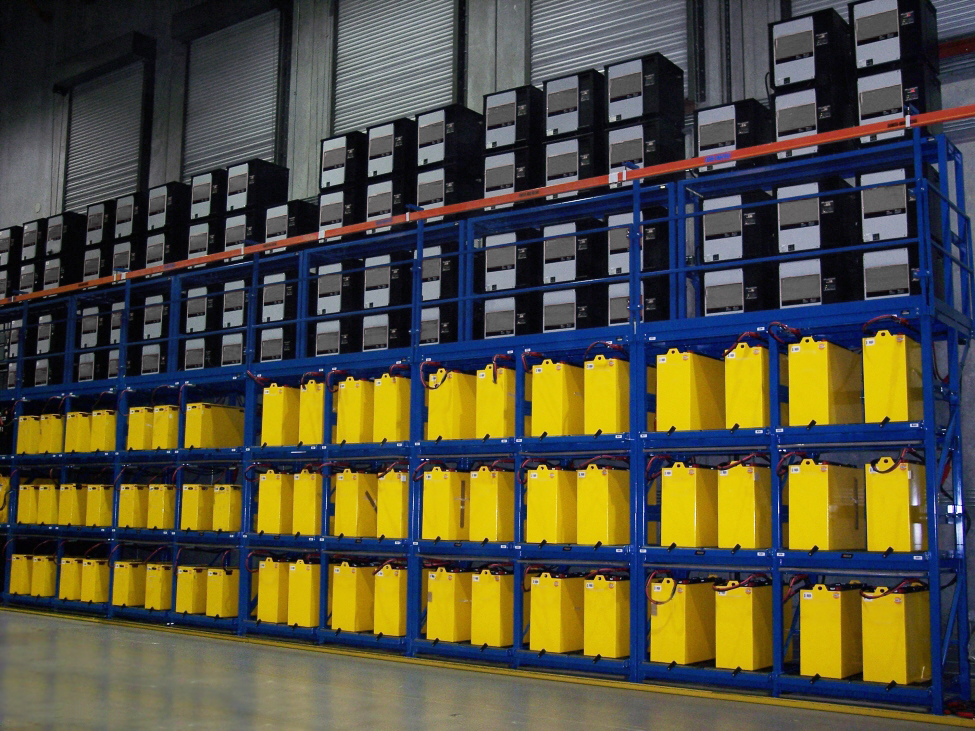We use cookies to make your experience better. To comply with the new e-Privacy directive, we need to ask for your consent to set the cookies. Learn more.
Improved Storage for Forklift Batteries and Chargers
A common and enduring myth claims that concrete floors can siphon the energy out of lead-acid batteries. Fortunately, it isn’t true — but there are plenty of other reasons to keep forklift batteries off of the ground. Efficient battery rooms use tiered storage systems and forklift battery charger stands to complete change-outs quickly and safely.
For most facilities, dedicated battery stands are the safest and most cost-effective way to store forklift batteries. When properly configured, they offer numerous advantages. Some of the major benefits:
-
Multi-tier forklift battery stands require less floor space.
In the warehousing industry, square footage translates directly into revenue, and there’s no reason to waste space on forklift battery storage. Double, triple, and quad stack system stands allow you to store forklift batteries without expanding the battery room's footprint, and by using vertical space, you can easily scale your operation when you need to add new trucks to your fleet.
Last year, warehouse space in the U.S. had an average yearly rental price of close to five dollars per square foot. If your forklift batteries are three feet long and two feet wide, each unit costs about thirty dollars a year in storage space alone — and for larger fleets, the numbers can quickly add up. Vertical battery stands can improve space utilization by up to 400 percent.
-
Roller beds allow for easier (and more efficient) battery transfers.
If your forklift fleet is equipped for horizontal battery extraction, choose stands with spark-proof poly-sleeved rollers. Roller beds reduce the force required to transfer batteries, placing less stress on the battery, the extractor, and the lift truck itself.
-
Drip pans capture electrolyte runoff.
Even in perfect conditions, some forklift batteries will leak. It’s always better to collect any lost electrolyte in an acid-resistant drip pan than to let it collect on battery cases or pool into dangerous, corrosive puddles.
Choose a battery stand that is powder coated for acid resistance, and don’t forget the stainless steel drip pans when outfitting your battery room.
-
Integrated charger stands reduce footprint and clutter.
Most quality forklift battery stands feature integrated charger shelves above the battery bed. This helps to cut down on battery room clutter and reduces floor space requirements to the absolute minimum.
-
Battery stands drastically reduce the risk of sparking.
Forklift battery cases are often made out of steel, which can spark when rubbed against hard, rough surfaces like concrete. Even if your forklifts are configured for vertical battery extraction they risk sparking every time you lift them from the concrete. Sparking in the battery room is a serious explosive hazard due to buildup of hydrogen gas, so these hazards should be avoided at all costs. Stands equipped with spark proof rollers or hardwood rails are a much safer storage medium than concrete floors.
-
Cable routing protects equipment.
Loose charger cables are vulnerable. They can be run over by forklifts, caught up in equipment, or damaged by kinking. Battery stands can be outfitted with detailed cable routing systems that keep every cable out of harm's way without sacrificing accessibility.

The myth about batteries on concrete floors comes from the early days of lead-acid batteries. Back then, industrial batteries contained glass cells and wooden cases. If the wood soaked up moisture from a damp concrete floor, it could swell, cracking the cells and ruining the battery. That’s not a danger for today’s forklift batteries.
Of course, while concrete floors can no longer suck energy out of your batteries, inefficient storage techniques can certainly siphon revenue out of your operation. Keep your batteries on sturdy, reliable stands to improve safety and efficiency in your battery room.
References:
Fink, Dan. "Ask The Experts: Batteries on Concrete." Home Power. Home Power, Inc., Oct. 2008. Web. 22 July 2015.
“Industrial Space Cost Comparison.” Houston. Greater Houston Partnership, n.d. PDF 22 July 2015.
